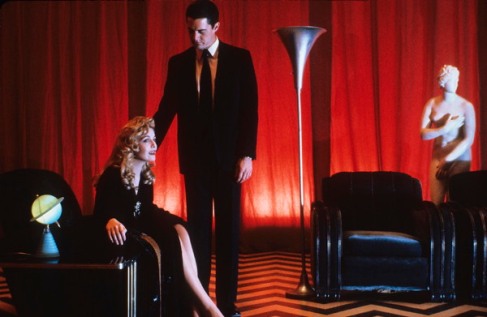Note: I might try starting out posts about special screenings (midnight shows, mostly) with the date and location instead of “I saw movie X on Y date at Z theater,” and see how I like it. Not how you like it; I don’t care about you. Just kidding, I do, but I figure this would help avoid repeating a phrase.
Date: Saturday, July 12, 2014
Location: Main Art Theatre, Royal Oak, MI
Until a few weeks ago, I’d never seen Eraserhead in its entirety; it only existed in bits and pieces in my head from seeing clips on YouTube and so on. As a David Lynch fan, it felt almost like a sin, so naturally, I went to the midnight show. It’s a weird, unconventional movie, sparse in exposition and dialogue, and with more body horror that’s not as common in Lynch’s later works.
It’s not easy to describe the film, but thematically there seemed to be a lot of anxiety and fear about marriage, fatherhood, and sex. The main character Henry is a factory printer who lives alone in a sparse apartment. His attractive, unnamed neighbor, with whom he interacts awkwardly, informs him one day that a woman named Mary—whom we later learn Henry had been dating—called asking him to have dinner with her parents. He discovers at the very awkward dinner that in the months since their last contact, Mary became pregnant and gave birth to their child, unknown to him. They get married to raise their child, who turns out to be either deformed or mutated, but does not resemble a human in either case, and almost completely wrapped up in bandages. The mutated child is honestly one of the less strange things.
Eraserhead foreshadowed a number of Lynch’s motifs in his later works: surrealism, strange and disturbing imagery, and a sense overlapping time periods. Lynch’s Blue Velvet takes place in the suburbs with a very 1950s aesthetic, but it begins to feel more contemporary with the exploration of the town’s dark side. In Eraserhead, the 1950s feel is achieved with the black-and-white cinematography, conservative fashion, vintage furniture and record player that we see in Henry’s apartment, and speech mannerisms. There’s not a lot of dialogue, but when the characters do speak, there’s a certain affectation that sounds like it came out of a mid-20th century film. Simultaneously, moments where Henry walks through a sparse landscape, into the plant where he works, and past buildings with dirty exteriors all have a very modern-day Rust Belt feel.
There is a fair amount of disturbing imagery and body horror, mainly with the infant. There are a few moments where Lynch cuts away from something seemingly “normal” and then cuts back, upon which there’s something grotesque or terrifying (one involves warts on the infant, and another involves Henry’s head). My “favorite” scene would have to be the awkward dinner where Henry meets Mary’s parents. Mary’s grandmother seems barely alive sitting in the kitchen, while Mary’s mother plays with her arms like a puppeteer to make a salad, lights a cigarette and puts it in the elderly woman’s mouth. (Now I’m wondering if Tobe Hooper watched this before making the original Texas Chainsaw Massacre. The grandfather of the cannibal family was almost the exact same way.) There’s also a lot of convulsing, a dark liquid that looks like blood coming out of the food, and Mary’s father looking very creepy.
Lynch also relies on sound to create an oppressive, uncomfortable atmosphere, predominantly with the use of background noise, such as a persistent droning, the deformed infant’s crying, or even rainfall. Seeing the movie in a dark theater, feeling as if I were surrounded by this noise, really helped me appreciate the use of sound that I probably wouldn’t have otherwise.
Eraserhead will be released on DVD and Blu-ray by the Criterion Collection this upcoming September.
